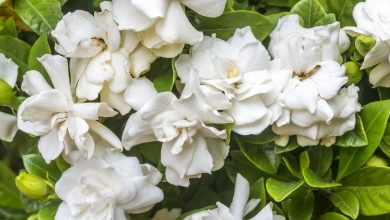Fern Care: [Soil, Humidity, Pruning and Problems]
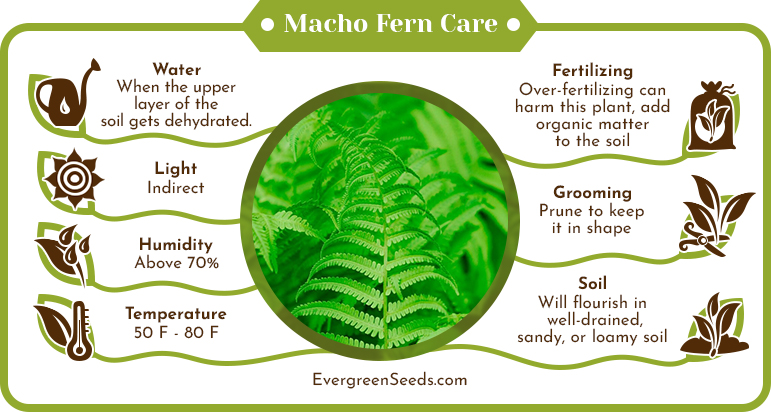
What characteristics do ferns have?

The fern is considered one of the oldest plants on Earth, according to evidence collected in times as remote as prehistory.
Many species of leafy ferns abound in tropical and subtropical regions, as occurs in the equatorial and Mediterranean fringe of the planet.
They are vascular-type plants, without seeds, because they reproduce by spores. There are thousands of species of ferns. The most common is the so-called Nephrolepis Fern.
There are varieties of dissimilar appearances, depending on the class: they can have very small triangular-shaped leaves, like those of the Adiantum fern, also called Maidenhair.
But there are also large and elongated ones, as is the case with a species popularly known as Bird’s Nest. Or species as unique as Cuerno de Alce can also be seen, characterized by the presence of a whitish fluff that covers all the foliage made up of leaves that look like the horns of the animal that gives its species its name.
None bloom, there are no flowers on any species of fern. Another essential characteristic is the need they have to live in humid regions, except for the Cuerno de Alce variety. In homes, they usually reign as a prominent element in interior decoration.
What soil needs do ferns have?
One of the most important activities to prolong the life of ferns is to have a porous substrate, which contains a layer of mulch or peat at the base of the pot.

An excellent combination is half heather soil and half mulch.

As for the fertilizer, it is very important to do it every 15 days when spring arrives, using a good liquid fertilizer for ferns dissolved in the irrigation water.
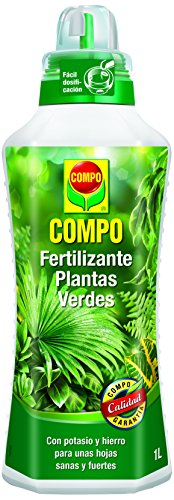
How to make a fern grow strong and vigorous?

There are two conditions for a fern to grow healthy: it needs to live in high humidity environments and it cannot tolerate direct sun.
If they are kept indoors, dryness caused by heating systems must be avoided.
To do this, it is best to provide them with a privileged space on a terrace where the shade dominates the environment.
Another very important piece of information is that they should stay in the most humid places in the house, such as the bathrooms.
Not so in corridors or transit areas where air currents flow. That is fatal for them.
But to keep them always beautiful and healthy, it is appropriate to carry out constant spraying on their fronds, you have to give them constant watering, without exaggerating, at least 3 times a week.
Although in summer the amount of watering must be intensified, up to twice a day so that the substrate is always moist. The opposite occurs in winter. It is ideal at this time to reduce irrigation to its minimum expression.
Experts recommend using rainwater to water them, but not too cold. Frequent spraying will always be necessary. Another key is light.
Although there are species that tolerate living in shady, dark places, they really need a lot of indirect light so that photosynthesis is fully carried out and they can grow splendidly. Consequently, it is advisable to place the fern in a place with indirect light that reaches it from a south-facing window.
A hanging plastic pot is the most recommended at the time of planting, because they are the ones that retain the most moisture. Likewise, it is advisable to transplant the plant every two years, taking care of the roots. The best time to do it is spring.
What humidity do ferns need?
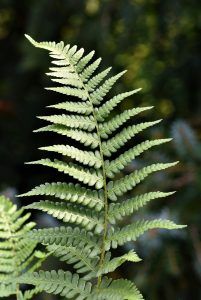 The ideal temperature for ferns ranges from 15ºC to 24ºC. They do not tolerate dry environments, but they do not resist frost either.
The ideal temperature for ferns ranges from 15ºC to 24ºC. They do not tolerate dry environments, but they do not resist frost either.
To be more precise, 20ºC is the temperature that a fern appreciates the most, below 15ºC they suffer a lot and get sick. In icy or very cold areas they do not survive.
A simple and effective technique to ensure that our fern at home always has moisture is to provide it with two pots. In the first, which must be larger, it is necessary to fill with plenty of moss and water.
In the second we will have the plant always beautiful if it has good drainage in the lower part, a large hole to help regulate access to good humidity.
Another way to provide constant humidity is to use two saucers at the bottom of the pot. A larger one will have permanent water, so that the potted fern is placed in the smaller plate, so that it absorbs the humidity it needs.
It is recommended that the remains of water always come out of the pots, in order to avoid rotting of the roots. With this we ensure superficial irrigation, only from above, but only once a month, since the plant will always drink water from the large plate.
Is it necessary to prune ferns?
They do not need regular pruning. Only a deep and wide pot that allows normal growth of the plant. Only dry fronds should be removed. Nothing more.
How often should we prune ferns?
Only dry fronds should be removed. Nothing more.
How to avoid pests and diseases of ferns?
There are several signs of disease that can be registered in a fern. Let’s look at the most common evidence:
Fronds look misshapen and sticky
This occurs when the mealybug attacks and undermines the fern. It happens because this plague excretes a kind of molasses that makes them sticky. Oleoparation must be applied, following the manufacturer’s instructions.
Leaves yellowish or with brown spots
Usually, when these spots appear, the leaves will start to fall off. When this happens, it means that the fern is not supporting the dry environment. The environment is too dry for your liking. If it is not moved, it will dry out completely.
Lack of growth and discolored leaves
This is caused by an acute lack of nutrients. You have to pay frequently and renew the substrate.
leaf rot
When rot occurs in young or tender leaves, it means that the plant has become ill with Botrytis, because it has excessive humidity. It is therefore advisable to space out the watering and check the drainage system of the pot. In the same way, it is convenient to apply specific insecticides.


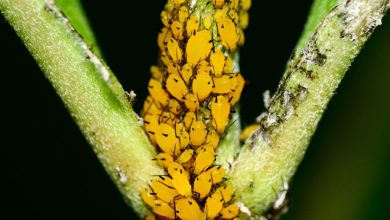
![Photo of Mulch Fly: [Detection, Steps to follow and Products to use]](https://www.complete-gardening.com/wp-content/uploads/2022/08/mulch-fly-detection-steps-to-follow-and-products-to-use-390x220.jpg)

